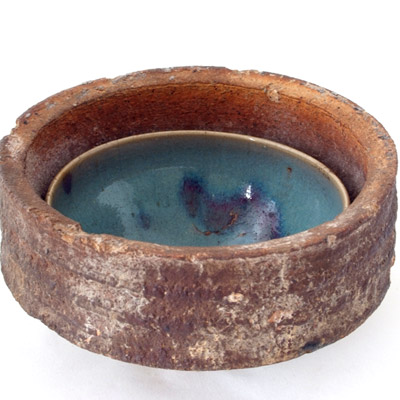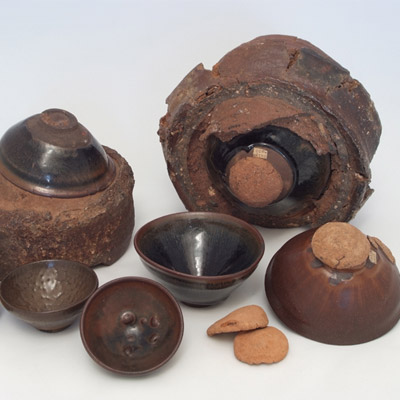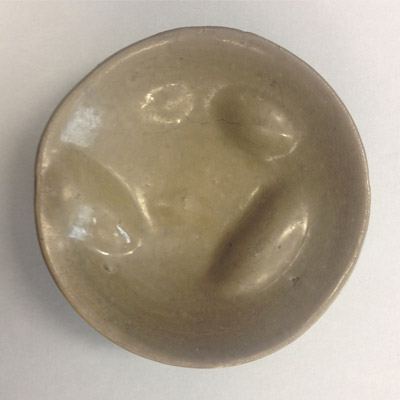Waste Not, Want Not?

There are many ways to fire ceramics, from simple hearths to modern industrial gas-fired kilns. Great knowledge and skill were required to fire glazed tea bowls, which were mass-produced in southern China during the Song dynasty (968-1279 CE). Potters created "dragon kilns" for this purpose. These elaborate facilities extended up hillslopes, some for more than 200 feet. Since hot air rises, heat from wood fuel lit at the bottom of the kiln climbed upslope, maximizing energy efficiency.
Nonetheless, firing accidents were common. As fuels reached temperatures of more than 1800 degrees Fahrenheit, a sudden gust of wind could cause vessels to warp, twist, or even explode. Glazes have even more opportunities to fail, as hot melted glaze will stick to anything it touches.
The failed ceramics—or "wasters"—exhibited here were never used. Instead, they were discarded at the kiln site. The enormous mounds of wasters reveal how often the process went awry.
With so many ways things can go wrong, perfect bowls seem remarkable. By studying the failed pieces we can appreciate the elaborate process of their creation and the skills of their makers.









